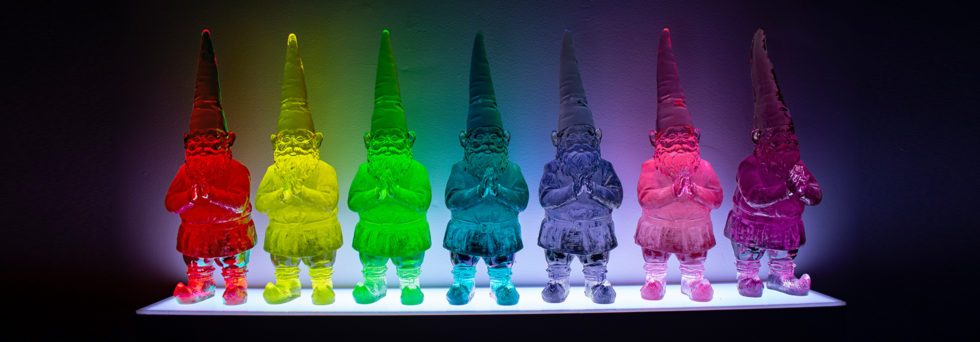“Part of my creative desire is to find new ways to convey traditional subject matter as well as my own childish motives to move against the art establishment. For me the figure will always be the ‘original sculpture’ and abstraction will always be it’s ‘rebel child’ however both share a common thread with monumentality and public art. It is a conflict that I am constantly challenged by and the more I try to resolve the issue between monumentality and sculpture the further my subject matter devolves into a kind of anti-monumentality. It is this concept of the anti-monument that has pervaded much of my subject matter throughout each medium I explore.
My primary processes have been casting and welding and each process has posed a different question concerning my concept with the anti-monument. With steel sculpture the biggest challenge has always been the evasion of abstraction. I want to mold the cold rigidity of industrial steel into something familiar yet I also enjoy the factory-like process of cutting and machining the material through a regimented, impersonal, assembly line system. Within my process of rose-making I found a solution to both my desire to do machine-like work while still working within an organic subject matter. The rose is conceptually anti-thetical to the industrial application of welded steel. A symbol of romance that is void in the ‘practical’ world of steel working and to some degree contemporary art.
Similarly, casting and mold making are also mechanical, replicative, processes. Most of the items I cast are bought at super markets, and garden supply centers, etc. and I have deliberately chosen objects that are abundant and easily identifiable. In many ways I’m very much pre-occupied with classical subject matters; figurative statues, still life painting, landscapes, flowers, etc., and what their roles are, if any, in contemporary art. Would Cezanne still paint apples or would he focus on chip packets and candy bars? How can a figurative statue find originality if it continues to serve as idealization of the human form? How can formalism and abstraction be united with the vernacular? In each question I have only been able to find resolve with the anti-thetical or anti-monumental. The Gnome both dwarfish and common is a statue in its own right. The sculptural and formal triumph of the bulbous bags of refuse we pile high in unfathomable compositions throughout or city streets. And the random objects that crowd our coffee tables form a symbol of who we are as people as well as what are status is in society the same way the old masters would render jewelry or game birds to reflect the status of their patrons. It is within this paradox that I seek to both taunt as well as pay homage to all the great artists of both the past and modern times.”
-Sam Tufnell 2014

